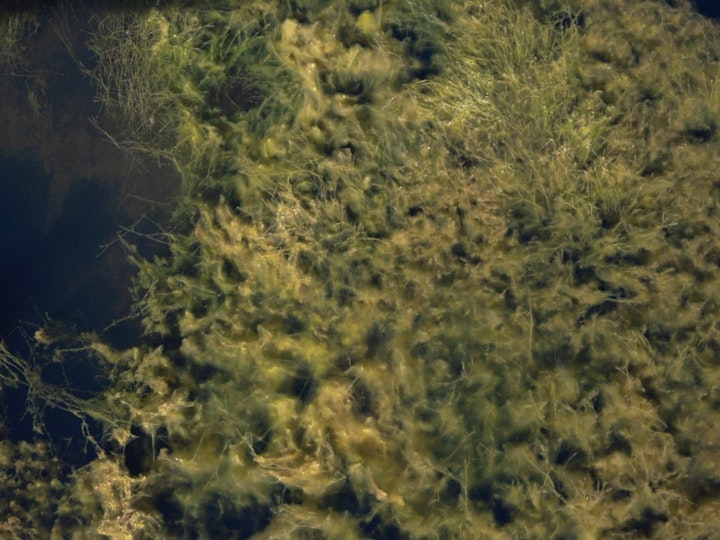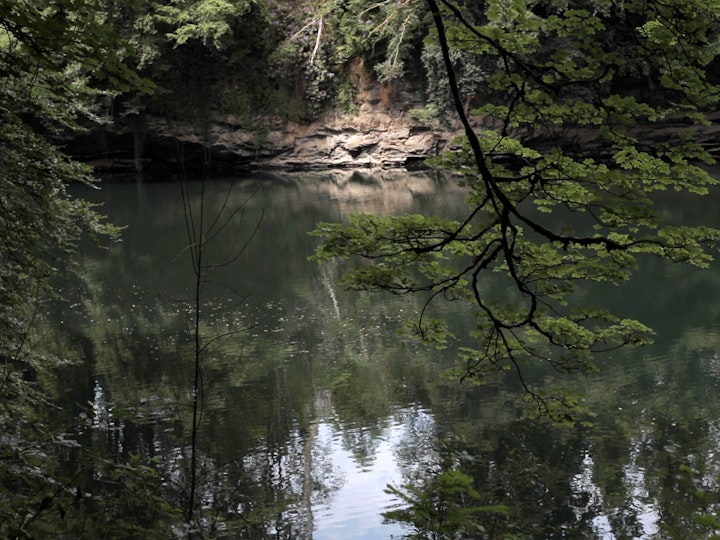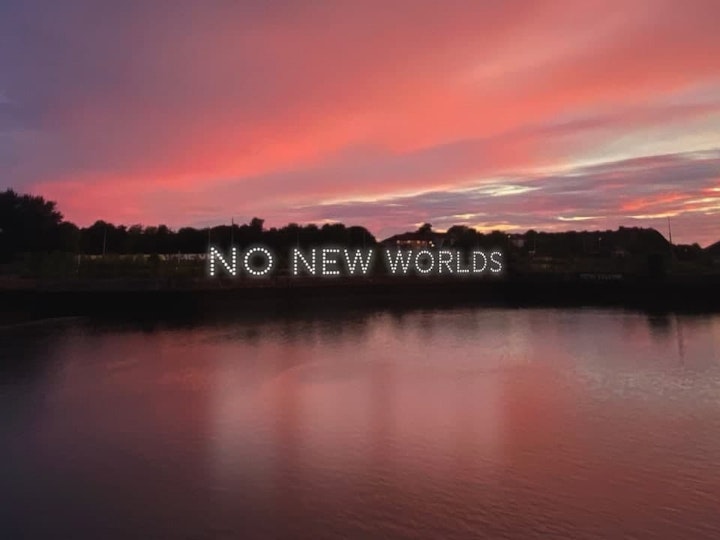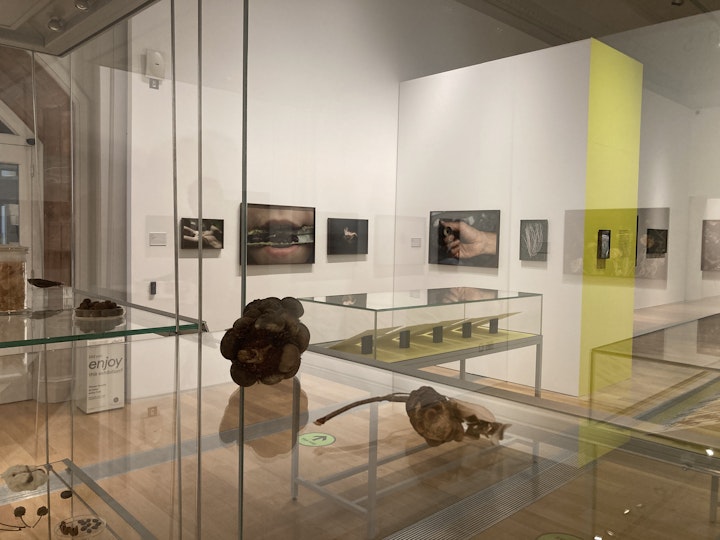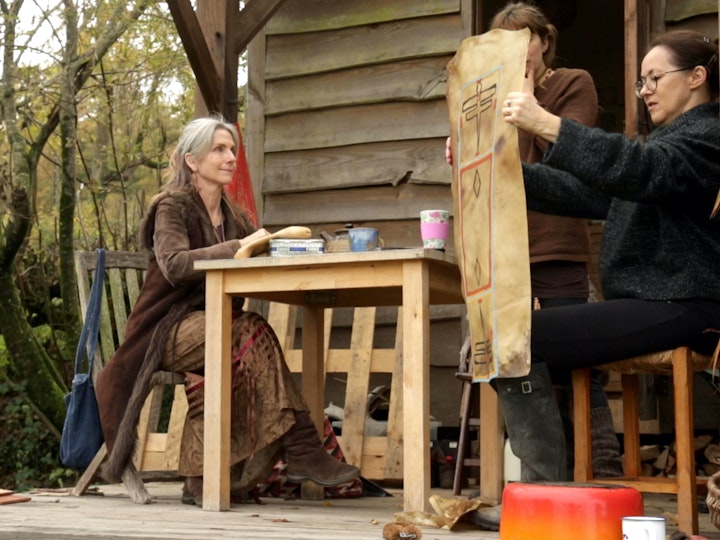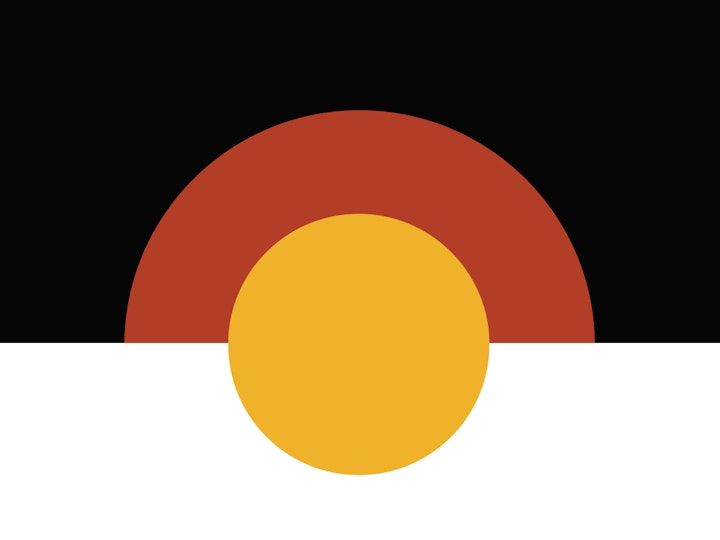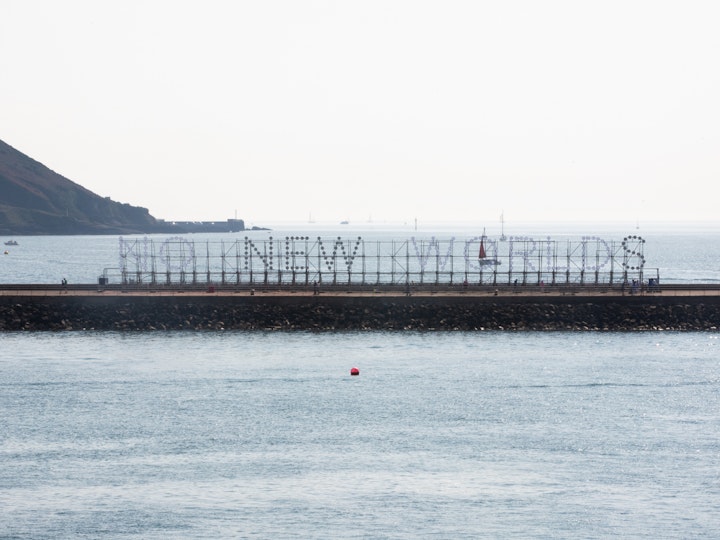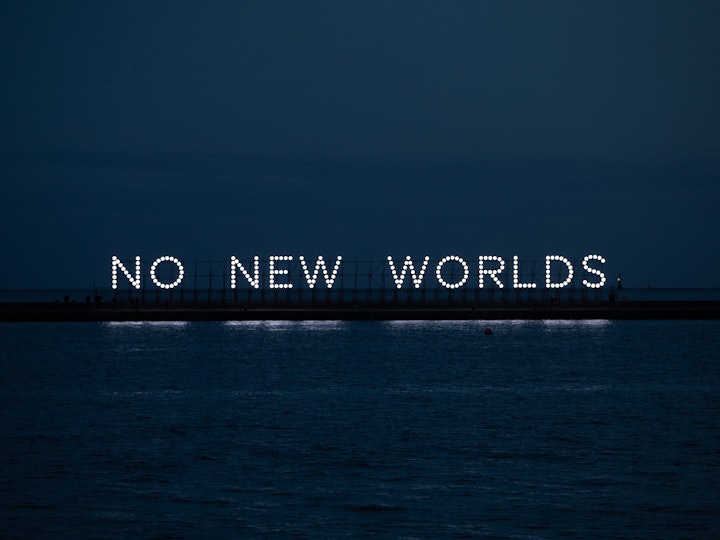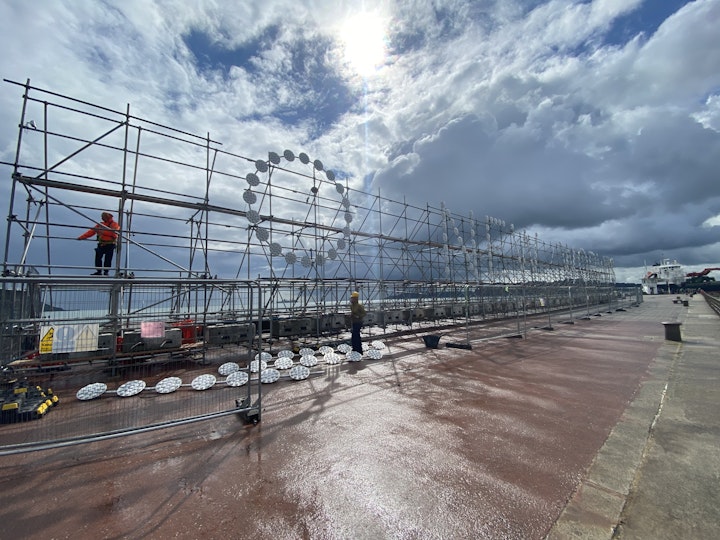Borders and Borderlands
North America was not a “new world” in 1492 but a very old one with a history far lengthier than what has come since.
MAP 1.2 American Indian Tribes, ca. 1600. (From C. Matthew Snipp, American Indians: The First of This Land [Russell Sage Foundation, 1989.] Courtesy of the British Library Board.)
This essay collection rests on the straightforward premise that American Indians are crucial to the teaching of U.S. history. Yet some might ask, “Why Indians?” The clearest response is that North America was not a “new world” in 1492 but a very old one with a history far lengthier than what has come since. More specifically, at the time of European invasion, there was no part of North America that was not claimed and ruled by sovereign Indian regimes. The Europeans whose descendants would create the United States did not come to an unsettled wilderness; they grafted their colonies and settlements onto long-existent Indian homelands that constituted the entire continent. We cannot understand European and Anglo-American colonial worlds unless we understand the Native worlds from which they took their shape.
It seems an odd realization that in teaching American history we discuss Indian sovereignty and bordered domains primarily in the nineteenth and twentieth centuries when they were most under assault by U.S. policies that sought to dispossess Indian nations of land and disenfranchise them of their power. Thus we tend to talk about Indian sovereignty in negative terms—as something they were always in the process of losing over the course of U.S. history. Yet we need to address sovereignty in positive terms because we cannot begin to understand how Euro-American colonialism wore away at it unless we first know how Indians exercised power over the land and vis-à-vis their Native and European neighbors.
Thus we must begin by acknowledging the fundamental essence of Indian sovereignty—“the power a nation exerts within unambiguous borders.”1 More specifically, we must recognize “how Indians understood territory and boundaries, how they extended power over geographic space, and how their practices of claiming, marking, and understanding territory differed not only from Europeans’ but also from each other’s.” In my own research, if one compares the border marking of hunter-gatherers, sedentary agriculturalists, and mounted hunters and raiders in the region that would become Texas and the southern plains, one finds that residency, economy, trade, politics, raiding, horticulture, hunting, ethnicity, kinship, alliance, and enmity all played a part in shaping different Indian nations’ geographic dominion. Yet, no matter the political economy, all of them governed and defended bounded, sovereign domains.
Let us look briefly at those three case studies in Texas and the southern plains in order to get the conversation about Native borders going. It is often assumed that hunter-gatherers may be better understood for what they lacked as opposed to what they had, but they maintained clearly delineated ethnic domains defined by kinship and marriage. For hunter-gatherers such as Coahuilteco and Karankawa speakers, territories were often shared spaces of control within which certain groups maintained exclusive rights to collective ranges and resources. The allegiances among the groups meant that they joined together to hunt and to defend the lands they held in common. The boundaries of their territory were well established, known to all, and marked by natural sites such as rivers or bays and manmade phenomena such as watering holes, petroglyphs/pictographs, or painted trees. Trespass was a legal concept, and once Europeans arrived in the region they were subject to that charge.
Sedentary agriculturalists such as Caddos exercised control over a more expansive bordered domain made up of rings of settlement. Hunting territories manned and defended by small family groups in hunting lodges made up the outermost ring. Moving inward, the next ring was a space made up of farming homesteads surrounded by cultivated fields and small hamlets, each represented by a subchief. At the core, one found the ceremonial complex and primary township of the head political and religious Caddo leadership. To secure their domain Caddos had border control as well as passport and surveillance systems, and within their territory were internal boundaries between member nations.
For mobile groups such as Comanches and Apaches, raiding served geopolitical as well as economic purpose in aiding territorial expansion. Both groups evinced clear growth strategies by extending control over greater and greater subsistence zones. Their boundaries might move regularly, but that did not diminish the security of their borders; indeed, mobility was the key to border defense and resource management within extensive territories. Apaches and Comanches too marked their borders with landmarks, cairns, and trees made to grow in particular forms or directions.
Thus when Europeans arrived, all set to colonize the region, they found their border-making aspirations ran smack up against the border defense and border expansion of Indian nations. Spaniards and Frenchmen found no empty spaces into which to expand their empires; they had to seek Native acceptance and permission to build settlements, trading posts, and missions within recognized Indian domains. “Indian homelands brushed up against one another, their edges and peripheries creating zones of shared and contested indigenous dominion. The lines drawn between Indian polities more often than not took precedence over newer boundaries drawn between themselves and Europeans, even long after Spanish, French, and English arrival.”2
As it turns out, my scholarly concern with Indians’ borders, as outlined above, grew out of frustrations in the classroom teaching American history—frustration with two things particularly. One is the conceptual notion that as soon as Europeans put their first big toes on the American coast, all the Americas became a “borderland” up for grabs to the first European taker—a notion that denies Indian sovereignty, control of the land, and basic home field advantage. The second thing that set me off was the way in which our textbooks encourage this cockeyed vision of America with their maps.
Taking these two issues in turn, the concept of borderlands sometimes appears to be used alongside or in place of frontiers, but either way, when we map it out on the ground it remains essentially a European-defined space. In American history, borderlands, frontiers, hinterlands, and backcountry customarily refer to the edges and peripheries of European and Euro-American occupation and the limits of their invasion, expansion, conquest, and settlement, where Europeans and Euro-Americans confront Indians or rival European powers. Like frontiers, borderlands appear just beyond the reach or sphere of centralized power associated with imperial European governance. Like frontiers, borderlands are zones “in front” of the hinterlands of Euro-American settlement, or “in between” rival European settlements—think of the “Spanish borderlands” that are caught between the core of Latin America and the expansionary Anglo-American world. Either way, they are supposed to be untamed, unbounded wildernesses waiting to be taken in hand by civilized Euro-Americans.
Frontiers and borderlands are far from the imperial cores of France, Spain, Britain, and, later, the United States and by definition are absent of a monopoly of power or violence. So, on the one hand, these are spaces into which Euro-Americans go without the force of the state or military near at hand. Such conditions, by implication, are what make it possible for Indians to stand on equal ground, to negotiate, and to struggle for advantage. But, critically, Indians’ ability to stand their ground and to struggle for advantage has nothing to do with capabilities of their own; implicit to the idea of borderlands and frontiers is the assumption that Euro-Americans simply have not yet moved in or taken over, but, inevitably, they will. It is all part of a process, the first stage if you will, of inexorable conquest.
Borderlands are therefore spaces created by Europeans and Euro-Americans as they seek, explore, or expand into lands without borders. Borderlands appear where independent explorers, frontiersmen, and coureurs de bois launch themselves into the woods, in the process forging new paths for others—surveyors, settlers, and armies—to follow eventually. Or they develop where missionaries, licensed traders, and presidial soldiers move as representatives of church, state, or mercantile institutions at the forefront of official colonial projects. As Jeremy Adelman and Steve Aron outline, borderlands exist prior to European or Euro-American ability to claim, draw, and defend “real” imperial or national borders. The meeting of peoples creates frontiers, and the meeting of empires creates borderlands in their model. Most important, the only empires are European, and borders come into being only with European and Euro-American sovereignty.3 The problem here is that such an equation not only denies the existence of Indian borders but also credits the boundaries claimed by European empires and the United States with undue clarity.
Meanwhile, whether intentionally or not, the maps in our textbooks contribute to an image of the Americas as a big blank, with no political divisions until Europeans and rival imperial colonizers arrive and begin to draw lines, divvying up the continent. When textbooks start with the obligatory section on pre-Columbian America, they feature maps that detail geographical divisions—Eastern Woodlands, Northwest Coast, Great Plains, Great Basin, Southwest, Subarctic, Arctic—or subsistence zones—agriculture, hunting, hunting-gathering, and fishing. Or, the maps detail the zones of different language families—Iroquoian, Muskogean, Siouan, Uto-Aztecan, Athabaskan, Salishan, Eskimo-Aleut, Algic. If and when the names of Indian peoples—never nations—appear in textbook maps, they float free of borders, hovering above the landscape with no defined boundaries to recognize the divisions of their territories. Thus, textbooks implicitly and explicitly tell our students that Indians had cultural, economic, and language zones of variation, but they had no named settlements or towns, no charted roads or highways, no territorial markers and, most important, no sovereign borders. We end up with a vision of North America ca. 1492 sparsely occupied by Indians living in tiny landless groups that were constantly on the move to hunt and gather.
Then, with European arrival, the map is wiped clean of wandering Indians or Native language culture zones, and in their places are Spanish, French, English, and Dutch “explorers” who tramp across a blank canvas, cutting through wilderness, discovering “unexplored” lands, with the only potential stumbling blocks along their paths being rivers, mountains, valleys, deserts and, for Francisco Vásquez de Coronado, the Grand Canyon. At this point, colored lines begin to appear marking the different routes of intrepid Europeans, with Álvar Núñez Cabeza de Vaca, Hernando de Soto, Jacques Cartier, Samuel Champlain, Giovanni da Verrazzano, and later John Smith competing to cover greater distances and claim more territory for their rulers.
Political borders first make an appearance in textbook maps of America only with the establishment of the British colonies, New France, New Netherlands, and New Spain—all of them “new” creations that rewrite historical spaces as European and, in so doing, deny the past of America’s indigenous populations. According to this cartographic vision, there are no “old” worlds in the Americas. Only then does America have towns for the first time—Quebec, Montreal, Boston, Jamestown, New Orleans, Santa Fe.
The most ubiquitous map design for this period of American history divides the continent into Spanish, English, and French territories—drawing borders for European claims far beyond the geographical reach of any imperial presencemuch less imperial control. If European rulers did indeed engage in a paper war of different colored spaces and imaginary borders during this period, our textbooks reprint the imperial fantasy. In stark contrast, Indian names may remain on the map, but they float free, with no moorings and no borders, subsumed under the authority of their presumptive new European overlords.
Taking this “anticipatory geography” to the extreme are the textbook maps that preordain the creation of the United States by backgrounding maps of early America with the borders of all forty-eight mainland states drawn in gray scale.4Consider figure 1.1. Pre-Columbian America already bears the imprimatur of a United States that will not exist even as a twinkle in Thomas Jefferson’s eye for another 300 years, thus the map tells our students, implicitly and explicitly, that the conquest of North America was a forgone conclusion even in 1491. Or examine map 1.1, charting the route of the Lewis and Clark expedition in the first decade of the nineteenth century, and look for any sign of Indians. The only hint comes from the location of the winter quarters of 1804–5, identified as “Fort Mandan,” but if a student did not know Mandans were Indians, he or she would have no idea that the expedition’s survival that winter depended upon the hospitality and generosity of the Mandans and Hidatsas with whom its members traded for supplies.
More important, the student would have no idea from the map that the expedition was at every point along the way transgressing the borders of Indian nations. Rather, the entire continent appears to be fully in the hands of the British, Spanish, and U.S. governments, with U.S. appropriation of territory an ongoing and inexorable process. Students are again left believing that the greatest obstacles along Lewis and Clark’s overland route were the rivers, mountain ranges, and distances traveled rather than the Native people who controlled the lands and thoroughfares through which they moved. Adam Jortner’s essay in this collection offers a compelling examination of how textbooks undermine if not erase Indian territorial legitimacy in the maps that accompany chapters on the nineteenth-century United States.
If you scan through an entire U.S. history textbook, looking at the maps from the colonial period through the present, all in all, you will find that they depict North America as a space preeminently defined by Europeans and then Euro-Americans in motion. First, Europeans transformed oceans that had once been barriers into freeways of passage that brought them to the Americas. Then they charted routes and passageways across the continent, relentlessly claiming and confining the landscape within borders of their own imaginations as they pushed from east to west. The regions of North America still awaiting European or Euro
Textbook maps, just like scholarly spatial models, whether unintentionally or not, therefore deny Indian borders and territorial sovereignty. And this is critical. Because if Indians had no borders then they had no claim to land, and Europeans were not transgressing Native nations’ domains. They were not taking what was someone else’s; they were taking something that was up for grabs, there for the taking. The border contests that do warrant attention in our textbooks are between Europeans as they vie for territory with one another, not with Indians. Indians have no borders in U.S. textbooks until we reach the reservation era, as if the United States gave them their first borders when it confined and imprisoned them. Yet through the visual power of their maps, textbooks deny Indian sovereignty long before their readers reach the chapters detailing how the United States denied it on the ground through military and political coercion.
What is so striking, however, when we look at actual European documents and maps from the sixteenth, seventeenth, and eighteenth centuries is that Europeans themselves tell a completely different story from that found in our textbooks. They tell of American worlds defined by Indian sovereignty and power, power that they darn well recognized and before which they often had to bow. When Europeans struck out into what they believed to be uncharted wildernesses, they found instead networks of Indian roads and thoroughfares; they crossed borders marking passage from one Indian nation to another; and, most important of all, they met border control. One Frenchman compared a highway running through the Hasinai Caddo confederacy to one that ran between Paris and Orleans, and found the Native road to be as wide, level, and well beaten. To travel that road, moreover, the Frenchman and his companions had to carry passports given them by one group of Hasinais to ensure their safe passage into and out of other Caddo territories.5
The key for our purposes here is that, though our textbook maps refuse to document these Indian worlds, European maps document them quite clearly. Why?, one might ask. For Spaniards and Frenchmen, their colonial ventures were inclusive of Indians; they needed to know where to find Indian allies, trading partners, and potential converts if their imperial endeavors were to succeed. But, more important for all Europeans, no matter their colonial aspirations, they had to know whose land they were in, whose land they entered when they followed a route or crossed a river, because their survival might rest on that knowledge. They had to know where they were safe and where they were endangered. Europeans did not merely travel through Native homelands; they had to negotiate constantly with the Indian polities that were the owners and stewards of the territory. Indian nations controlled access to their land and its resources and the roads by which one crossed them. Europeans were subject to the rules of Indian jurisdiction. What we find then is that European maps charted Indian boundaries and territory—and, in doing so, acknowledged the power that Indian nations exerted within identifiable borders.
This may surprise us, because we have been taught that European maps were often “tools of imperialism as much as guns and warships.”6 Here it is important to distinguish between those maps made by and for Europeans who were on the ground, seeking to get around, to make contact, to establish ties and, fundamentally, to stay alive. It is the maps used and promoted by rulers and diplomats back in Europe that reduced swaths of the Americas to vying land claims painted in different tints of imperial color.
Early maps do have blank spaces, but more often than not, they indicate lack of knowledge, not the erasure of Indians. Once those landscapes became better known, Europeans did not fill them with imagined colonies but rather with Indian villages, towns, and trading centers with the routes of how to get to and from them charted with precision. And the power wielded by the Indian nations who controlled those spaces is clear. Early maps showcased Indian “giants” as a means of conveying power and threat—consider the Patagonian giants who tower over Spaniards in South American maps or the Powhatan men who dominate John Smith’s maps of Virginia. As well, it should be said, such images might convey the often-better diets and sources of protein available to Indians who grew to heights that did indeed sometimes make them tower over their European counterparts.
Beginning with charts of coastlines and bays, sixteenth- and seventeenth-century maps marked Indian settlements thick on the ground, guarding the shoreline and offering witness if not challenge to any European landing. Native cities appear in the earliest maps of the sixteenth century—and not just in Meso and South America. Dutch and French cartographers documented the palisaded towns of northeastern Mahicans and Iroquoians. Think of the Italian rendering of the Iroquoian town of Hochelaga, later the site of Montreal, with its detailed chart of the city gate, home of the king, inner walls, and outer fortifications. It has been argued that cartographers were simply translating Indian sites into visual terms that Europeans back home could better understand, but the reality is that Indian towns did have gates, rulers, and palisades—all characteristics that rang true to those familiar with European fortified cities.
Or, consider the Caddo city described and mapped by multiple Frenchmen and Spaniards in the late seventeenth and eighteenth century in figure 1.3. Combining the estimates of various European observers, the city was fifty miles long and eighteen miles across. It contained temple mounds, multistructured homes, and a ceremonial complex used by rulers for political, diplomatic, and religious functions. Surrounding the town were smaller hamlets, lavish gardens, miles of agricultural fields, and beyond that, more extensive hunting grounds, all of which were enclosed in marked and policed borders. One Frenchman concluded simply that Caddos were a people “that had nothing barbarous but the name.”7 Perhaps temple mounds and ceremonial complexes appeared new and foreign to European observers, but Europeans had no difficulty recognizing the economic and political power behind such structures.
European maps show us landscapes in which Europeans learned quickly and mapped carefully the Indian nations with whom they would have to negotiate for trade, missions, and settlement. See for instance Samuel Champlain’s excruciatingly detailed map of Canada (figure 1.4), where there is not an inch of space devoid of Indian possession and internal improvements. Such maps depict a world of foreign diplomacy (and enmity) among Indians and between Indians and Europeans across national borders. Why else did Europeans write of Indian nacións, kingdoms, confederacies, lords, and rulers? More often as not, these maps reflected information gained from Indian knowledge, not European exploration. We now well know the Chickasaw and Catawba maps that chart not the location of Indian nations connected by roads but the social and political ties that bound them in alliance. The earliest surviving Indian map, preserved in a Spanish transcript drawn in 1602 in Mexico City, showcases the information taken from an Indian known only as Miguel, who was captured by Juan de Oñate and taken back to the Spanish capital for his knowledge of the southern plains. The map shows the rivers, highways, and Indian towns of the region in relation to the upper Rio Grande, with distances and days of travel provided, along with an insert of Mexican towns and outposts to the south. From Miguel, Spaniards did not merely seek aid in navigating the land but information about the political relationships among Indian nations and the sources of Indian trade in precious metals.8 Much the same is found in Dutch and French maps as they sought to win over allies and partners who might allow them access to the profitable Indian fur trade far to the north.
Most crucially, many European maps testify to Indian territorial sovereignty directly. For example one 1728 Spanish map by Francisco Álvarez Barreiro charts the region far north of Mexico that will later become the North American Southwest, but it is covered with labels that recognize all the known regions controlled by different Indian nations—tierra de los Pampopas, tierra de los Cujanes, tierra de los Carrizos, and so on (figure 1.5) The land of Pampopas, Cujanes, and Carrizos—their land, not that of Spaniards. Indeed, these mapmakers acknowledged that European settlements existed as mere islands in a sea of Indian domains. Thus Miguel Custodio Durán wrote that the Spanish towns and villas of Coahuila all stood “along [the Indians’] border,” while the Texas presidio and town of Los Adaes were located within the Caddo kingdom.9
All of this is critical for our students’ understanding not only of Indian power and sovereign territory but also of the patterns and limits of European colonialism. We tend to imagine European colonizers put down roots, built towns, established colonies whenever and wherever they wished, according to resource location and imperial design. But what these maps tell us is that, in fact, Europeans often located themselves only where the whim and direction of their Indian neighbors allowed. Or, later, they took over Native sites abandoned or destroyed in the wake of epidemics and war. When we look then at the charts of European settlements, roads, and towns we must always be aware of the Indian sites that rest below them and defined the landscape first.
Significantly, it is in the maps of the British and Anglo-Americans where we most see the erasure of Indians from North American landscapes. And this may be what most trips up our textbooks, as they continue to define the European heritage of North America as primarily British. In contrast to Spaniards and Frenchmen, Anglo imperial goals rarely involved Indians, and their exclusionary colonial policies aimed at the dispossession and removal of Indians from the land. It seems little coincidence that it is in the historiography of French and Spanish colonial zones that we find spatial models for understanding early America that make Indians intrinsic to them. For the British colonies, Atlantic world models orient our students across the ocean to Europe and Africa; it is only to the north and west of the British colonies along the Atlantic Coast that we find a “middle ground,” a “Native ground,” and a “divided ground.”10
More recently Pekka Hämäläinen has argued for a Comanche empire in the middle of the continent that rivaled the Atlantic world, as it too was “a historical phenomenon so complex and abstract in nature and so vast in scope that contemporaries were able to grasp, at best, only fragments of it.” In the Great Lakes region, Michael Witgen maps a “Native New World” of indigenous social, economic, and political space that emerged in the interior simultaneously to—but separate from—the Atlantic world of settler colonies along the eastern coastline. Natale Zappia’s “Interior World” envisions another geographic model for emergent systems of Native economic and political power, independent of European influence, located in the vast region of southern California and western Arizona. All of these spatial models take as their core Native political economies and Native sovereign territories and recognize them as existing concurrent with but neither reliant upon, extensions of, nor subsumed by European colonial spaces. Imagine the cartographic redrawing that such models require of our textbooks.11
Nor were these Native worlds mere survivals of a pre-Columbian past; rather they were dynamic, evolving, indigenous worlds that responded actively and creatively to the presence of European newcomers. They not only productively transitioned in response to European invasion but also often made European colonialism bend to them. European colonies thus took their shape from that of Native nations as they implanted themselves within indigenous landscapes.
Moreover, the scholars of the middle ground, Native ground, interior West, Native New World, and Comanche empire track these Native spaces to a peak of power in the early to mid-nineteenth century, defying traditional declension narratives of American historiography. Thus, looking across the entire continent, stories of Native demise become exceptions to a continuum of Indian political narratives that found the sixteenth, seventeenth, and eighteenth centuries to be periods of economic and political expansion. As transformations of both the human and natural landscape took place, the broad scope of Indian autonomy outside the worlds of European colonies meant that the demise of French and Spanish colonial projects at the end of the eighteenth century saw Native nations (think of Lakotas and Comanches) expanding in their place, side by side with that of the early American Republic. Such evidence should encourage our students to see that the North American continent constituted not just homelands of Indians, but a landscape divided into bordered domains of indigenous nations, confederacies, and empires. Long before and long after the arrival of Europeans, North America was a political and economic landscape mapped with well-known national and imperial boundary lines, circumscribing the geographic areas within which Indian nations asserted control over resources, people, relationships, culture, ritual, and historical memory.
So what is the solution for our classrooms? We can hope that textbooks will eventually begin revising their maps under the weight of new and ongoing scholarship. But in the meantime, we must encourage our students to take the maps in their textbooks with a grain of salt. They must consider, analyze, challenge, and question the explanatory power of the maps and the assumptions built into them. I am struck by the idea that mapmakers, no matter the time, culture, or society, draw maps with their own location at the center—it speaks to the enormous importance of perspective. What a different picture of North American history we get if we take in the broad scope of the continent and include the vantage points seen from within and without Indian borders.
Notes
1. Juliana Barr, “Geographies of Power: Mapping Indian Borders in the ‘Borderlands’ of the Early Southwest,” William and Mary Quarterly 68, no. 1 (January 2011): 5–46. See page 9 for following quotes. The next three paragraphs summarize material from that essay. A digital teaching supplement with interactive maps accompanied the article and can been found at http://oieahc.wm.edu/wmq/Jan11/Barr/index.html.
2. Barr, “Geographies of Power,” 43.
3. Jeremy Adelman and Stephen Aron, “From Borderlands to Borders: Empires, Nation-States, and the Peoples in between in North American History,” American Historical Review 104 (June 1999): 818–41. For the most recent discussion of borderlands, see the special issue of the Journal of American History, “Margins to Mainstream: The Brave New World of Borderlands History,” especially the essay by the two editors of the issue, Pekka Hämäläinen and Samuel Truett, “On Borderlands,” Journal of American History 98, no. 2 (September 2011): 338–61.
4. J. Brian Harley, “Rereading the Maps of the Columbian Encounter,” Annals of the Association of American Geographers 82, no. 3 (September 1992): 532.
5. Barr, “Geographies of Power,” 11.
6. J. B. Harley, Maps and the Columbian Encounter (Milwaukee: University of Wisconsin Press, 1990), 97.
7. Isaac Joslin Cox, ed., “Narrative of La Salle’s Attempt to Ascend the Mississippi in 1687, by Father Anastasius [Anastase] Douay, Recollect,” in The Journeys of Rene Robert Cavelier, Sieur de la Salle, vol. 1 (1905; repr., New York: AMS Press, 1973), 231.
8. G. Malcolm Lewis, “Indian Maps: Their Place in the History of Plains Cartography,” Great Plains Quarterly 4 (Spring 1984): 91–108.
9. Jack Jackson, Shooting the Sun: Cartographic Result of Military Activities in Texas, 1689–1829, vol. 1 (Austin: University of Texas Press, 1998), 100.
10. Richard White, The Middle Ground: Indians, Empires, and Republics in the Great Lakes Region, 1650–1815 (New York: Cambridge University Press, 1991); Kathleen DuVal, The Native Ground: Indians and Colonists in the Heart of the Continent (Philadelphia: University of Pennsylvania Press, 2006); Alan Taylor, The Divided Ground: Indians, Settlers, and the Northern Borderland of the American Revolution (New York: Vintage, 2006).
11. Pekka Hämäläinen, The Comanche Empire (New Haven: Yale University Press, 2008), 353; Michael Witgen, An Infinity of Nations: How the Native New World shaped Early North America (Philadelphia: University of Pennsylvania Press, 2012); Natale A. Zappia, Traders and Raiders: The Indigenous World of the Colorado Basin, 1540–1859 (Chapel Hill: University of North Carolina Press, 2014).
Suggested Readings
Albers, Patricia, and Jeanne Kay. “Sharing the Land: A Study in American Indian Territoriality.” In A Cultural Geography of North American Indians, edited by Thomas E. Ross and Tyrel G. Moore, 47–91. Boulder, Colo.: Westview Press, 1987.
Basso, Keith H. Wisdom Sits in Places: Landscape and Language among the Western Apache. Albuquerque: University of New Mexico Press, 1996.
Deloria, Philip J. “From Nation to Neighborhood: Land, Policy, Culture, Colonialism, and Empire in U.S.-Indian Relations.” In The Cultural Turn in U.S. History, edited by James W. Cook, Lawrence B. Glickman, and Michael O’Malley, 343–82. Chicago: University of Chicago Press, 2008.
Harley, J. Brian. “Rereading the Maps of the Columbian Encounter.” Annals of the Association of American Geographers 82 (1992): 522–42.
Lewis, G. Malcolm, ed. Cartographic Encounters: Perspectives on Native American Mapmaking and Map Use. Chicago: University of Chicago Press, 1998.
Juliana Barr in Susan Sleeper-Smith's book: Why You Can't Teach United States History without American Indians
Part I: U.S. History to 1877
